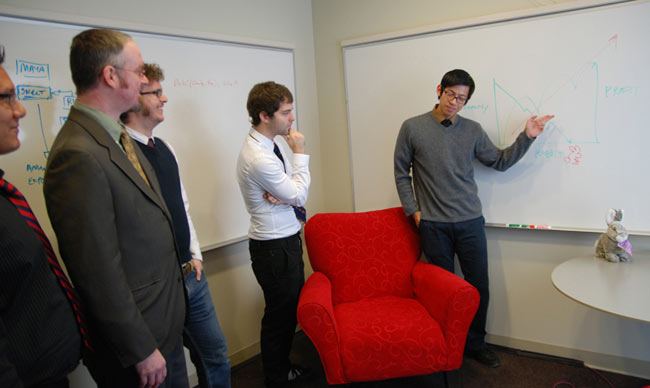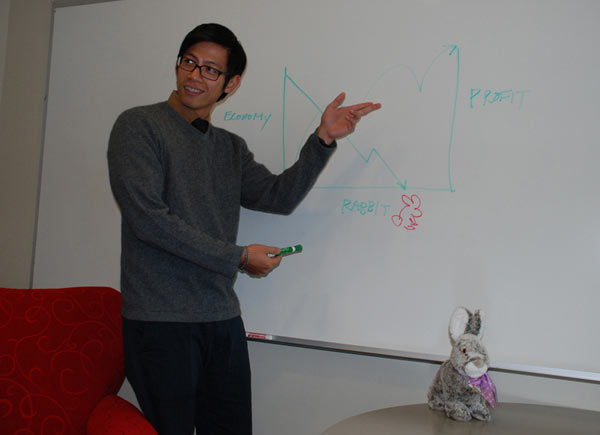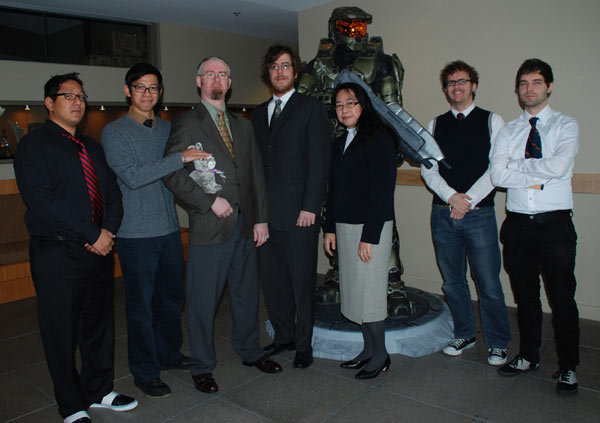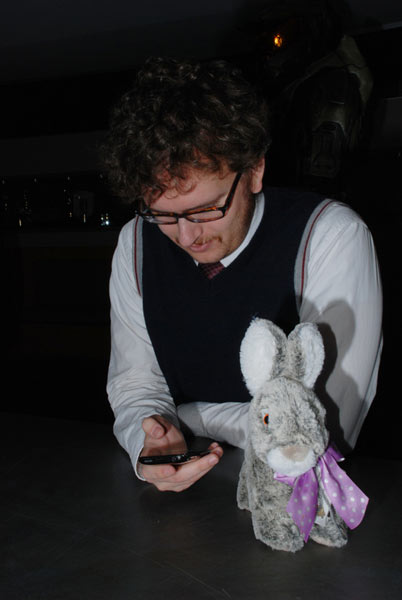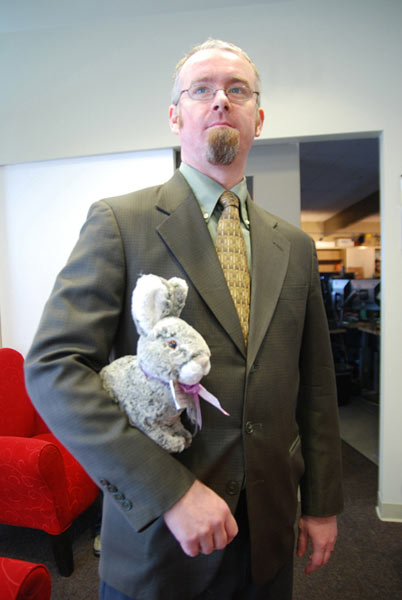Chronique:BWU 21/11/2008
Original[modifier le wikicode]
Posted by urk at 11/21/2008 5:26 PM PST
In the wake of the Halo 3: Recon trailer and Game Informer's recent Halo 3: Recon cover story, we figured it was about time we took a more personal look into the profile of the back-in-black badasses of the UNSC, otherwise known as Orbital Drop Shock Troopers. Though you may be familiar with these unique Special Operations squads by way of their campaign contributions in Halo 2 and Halo 3, or via the fictional works associated with the Halo franchise, next Fall you'll be suiting up yourself. It's high time you were briefed.
Thankfully for you, we're not going to just kick this door in layman style. This week, Robt McLees, staunch steward of the Halo Bible, Bungie artist extraordinaire, and grizzled expert in breach and demolition tactics, joins our squad. And he's come loaded for bear. Drop down a few scrolls of the mouse to read Robt's ODST profile and his answers to a handful of questions meant to familiarize you further with the who and what of the UNSC's Orbital Drop Shock Troopers.
Halo 3: Recon - ODST
ORBITAL DROP SHOCK TROOPERS (ODST)
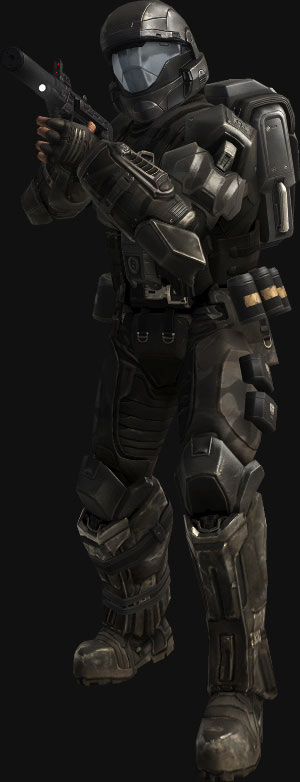
United Nations Space Command (UNSC) Orbital Drop Shock Troopers (ODST) are under the operational authority of Naval Special Weapons (NavSpecWeap). Their methods of operation allow them to conduct missions against targets that more conventional forces cannot approach undetected.
The ODSTs perform highly specialized, small scale, high-risk operations such as:
• Deep ground surveillance (DGS)
• Direct action (DA)
• Unconventional warfare
• Counter-terrorism operations
• Counter-contraband operations
• Personnel and special equipment recovery/capture
ODSTs are recruited from the Special Operations Groups of all the nations of the Unified Earth Government (UEG). Since the first group of "handpicked volunteers" was activated, ODSTs have been dropping "feet first" into combat.
Q. Dropping "feet first" into combat definitely fits the definition of "high-risk operations." What kind of screening and training pipeline are ODST potentials put through in order to make certain they are to the task? What is the initial criteria?
A. Every ODST is a veteran from some other Special Operations outfit. Therefore they have already gone through at least two layers of screening and months of intense training—not counting the years of on-the-job-training—before volunteering for the ODSTs. If anything, the selection process is a more stringent third layer of screening that takes place after a point in time that any potential volunteer would have theoretically washed out. There is no age or gender bias—as long as the candidate meets the physical and mental requirements they are guaranteed the opportunity to "try out" for the ODSTs.
Q. Once accepted onto an ODST squad, how is each trooper trained for specific operational roles? What types of specialized armament and weaponry are traditionally employed by the ODST?
A. Potential volunteers are recruited for service with the ODSTs because of their performance in their chosen MOS. As one might expect—once in the ODSTs the training continues. The most obvious specialized gear for the ODSTs is their iconic black and blue helmets and their distinctive grey and black camouflage BDUs/armor. The one unique piece of equipment most heavily associated with the ODSTs is the SOEIV (Single Occupant Exoatmospheric Insertion Vehicle)—(aka: drop pod and HEV (Human Entry Vehicle)). And finally—they have access to sound suppressed versions of most of the regular UNSC armory.
Q. How many operators make up a standard combat team? Do specialized teams exist or is each ODST squad expected to be equally proficient in terms of capabilities?
A. The number of combat teams can vary from company to company but it usually consists of six to eight—with each combat team specializing in a particular mission-set. A combat team consists of 10 to fourteen operators, each of whom has a specific function on the team. While each combat team is meant to excel in their assigned mission-set, they are expected to be flexible enough to adapt to any given situation.
Q. Is "force multiplication" a primary function of the ODST? How is that role received by conventional UNSC forces?
A. ODST units are not embedded within conventional forces, but they do participate in joint operations. The ODSTs tend to be force multipliers wherever they go. The conventional UNSC forces are glad for the help. They need all the help they can get.
Q. Is there a specific historic action or operation that the ODST are most known for?
A. Everything pales in comparison to the defense of Earth in 2552—and that was a global campaign.
If words aren't your thing, here's a small visual treat to round out the Halo 3: Recon information this week:
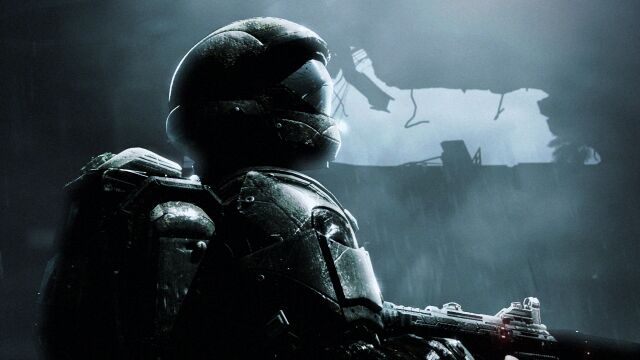
Taking Care of Fairfax
Last Friday we introduced you to the business side of things at the studio. This week, we've got more pictures of Business Friday in action, but this time, we're not only taking care of business, we're also taking care of Fairfax.
We've taken time out in the past to point out Fairfax's adventurous escapades at other offices and on other websites, but we figured it was about time our support got a little more personal. Watchful eyes noticed that Fairfax turned up as our miniature Master Chief's faithful steed via our in-studio webcam, but Marissa's fuzzy bunny did more than just provide our beloved hero with a few days of frolicking and companionship, the little ball of fluff also managed to wriggle into other areas of the studio.
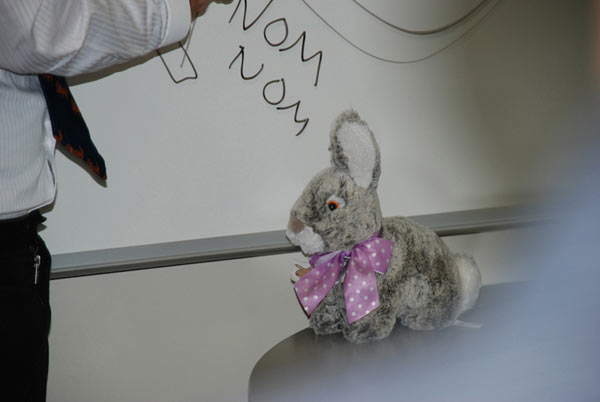
Fairfax demands the seat of power in the Boardroom.
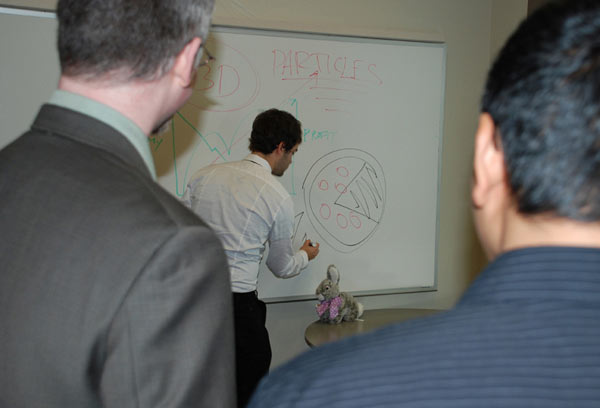
Pie Charts...Pizza Pie Charts.
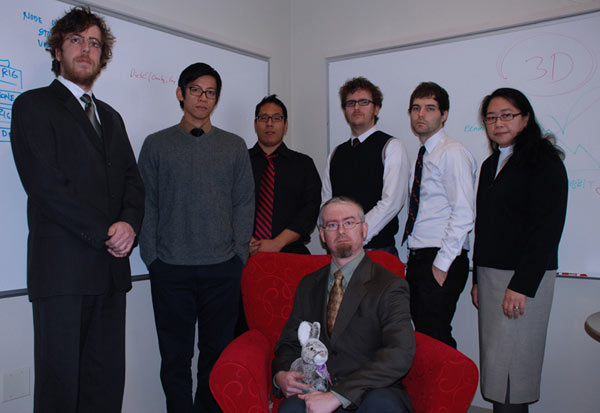
Chairmen (and woman) of the Board.
If you're unfamiliar with Marissa's Bunny, Fairfax, please take a few moments to get yourself up to speed by clicking on the links below. At Marissa's website you can buy your very own Fairfax plushie, order free "business" cards to spread the word about Infantile Spasms, or you can even help complete Marissa's Amazon Wishlist. If that all sounds like a little too much work for you, you can use the Paypal link and just send along a little bit of cash in support. We know your money is hard-earned, but what better way to spend it then in support of a great cause?
We know were in the business of fun and games, and that's why you're here, but there's nothing wrong with taking a break from the fun side of things for a minute to donate even just a few moments of your time.
Marissa's Bunny - An Infantile Spasms Awareness Blog
"Marissa is a baby girl who was diagnosed with Infantile Spasms on February 15th of 2008. Infantile Spasms is a serious pediatric epileptic condition that could leave her mentally and physically disabled for life - or worse. Fairfax is Marissa's Bunny - a shared name for three bunnies that are traveling the world trying to spread awareness of her disease that has no reliable cure and is hard to relieve."
Next Week's Weekly Update Update
The studio is off next week for holiday. What can we say? Our benefactors are benevolent and kind.
Though we know this news will be consumed as the bitter, corked glass of wine at the finish of an amazing Turkey feast, we thought it best to give you the heads up. Tune in Monday and Tuesday for a couple of pieces of content we've whipped up and set to drop for your viewing and reading pleasure, but don't look for much else.
We'll make it up to you. We promise. The Pentathlon draws near.
